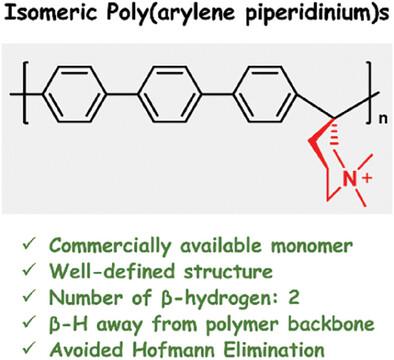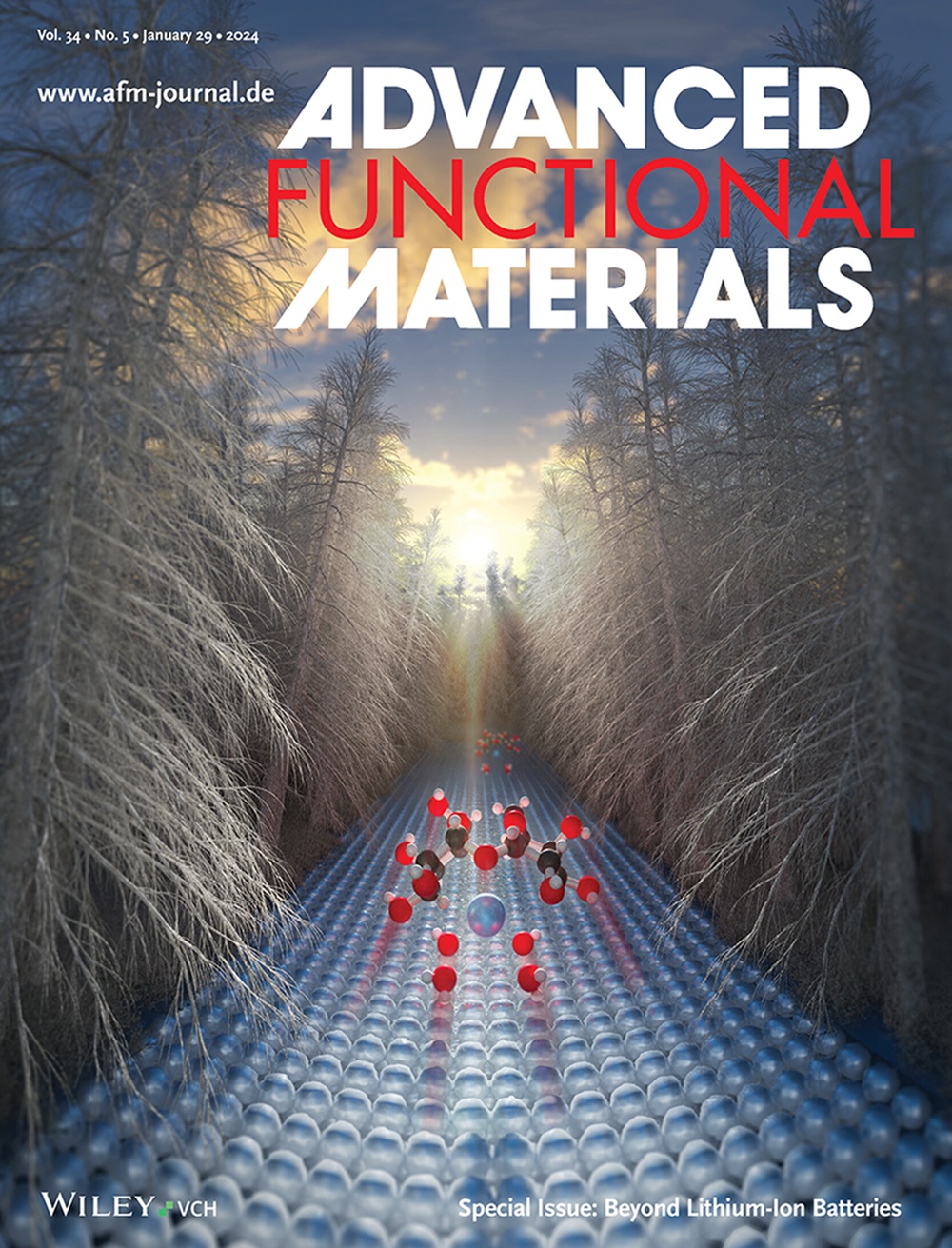Isomeric Poly(arylene piperidinium) Electrolyte Membranes with High Alkaline Durability
IF 18.5
1区 材料科学
Q1 CHEMISTRY, MULTIDISCIPLINARY
引用次数: 0
Abstract
The isomerization strategy is employed to enhance the alkaline stability of poly(arylene piperidinium)s (PAP) while maintaining the monomer commerciality and polymer architecture tunability. Isomeric poly(arylene piperidinium) (i-PAP) exhibits improved alkali resistance relative to conventional PAP, as evidenced by ex situ alkaline stability and in situ cell durability tests. Following treatment in 10 m aqueous NaOH at 80 °C for 360 h or operation at 0.4 A cm−2 for 100 h in an anion exchange membrane fuel cell (AEMFC) prototype, the decomposition of the piperidinium moieties in i-PAP is ≈50% of that observed in PAP. Moreover, through a copolymerization strategy, the i-PAP-88 membrane, which has suppressed water absorption, reaches a peak power density of 1.44 W cm−2 and demonstrates an in situ durability of 310 h. Furthermore, a noble metal-free (anode) AEM water electrolyzer (AEMWE) achieves a high current density of 6.43 A cm⁻2 at 2.0 V and an excellent Faradaic efficiency of 98.3%. This study highlights a strategy for designing alkali-stable polyelectrolytes that mitigate degradation during the operation of alkaline electrochemical devices.

求助全文
约1分钟内获得全文
求助全文
来源期刊

Advanced Functional Materials
工程技术-材料科学:综合
CiteScore
29.50
自引率
4.20%
发文量
2086
审稿时长
2.1 months
期刊介绍:
Firmly established as a top-tier materials science journal, Advanced Functional Materials reports breakthrough research in all aspects of materials science, including nanotechnology, chemistry, physics, and biology every week.
Advanced Functional Materials is known for its rapid and fair peer review, quality content, and high impact, making it the first choice of the international materials science community.
 求助内容:
求助内容: 应助结果提醒方式:
应助结果提醒方式:


